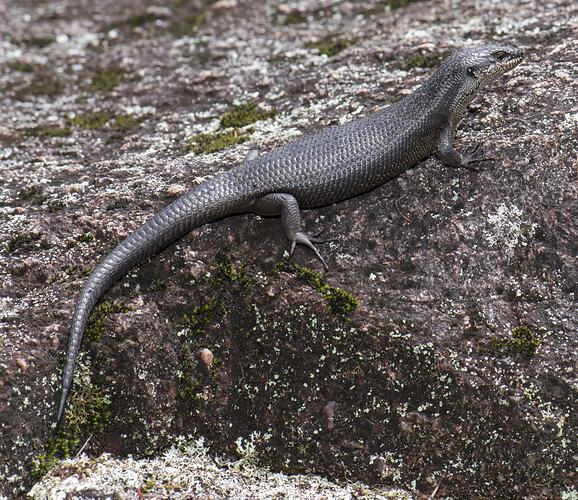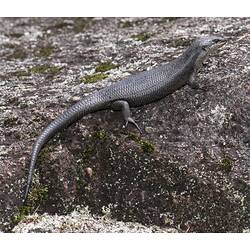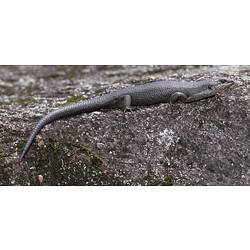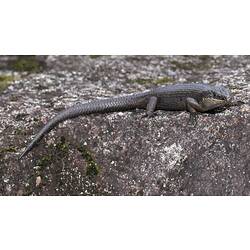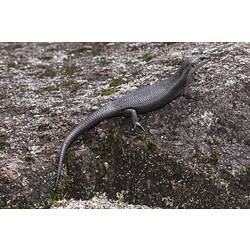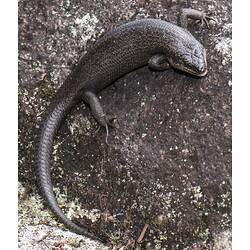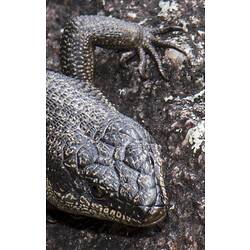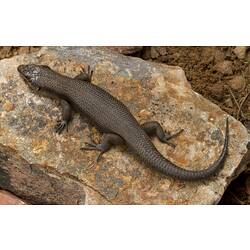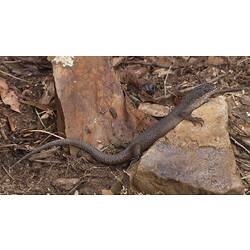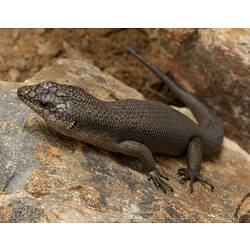General Description
The Black Rock Skink is a large, chunky skink It is very dark in colour with a pattern of paler broken dashes over most of its upper side. The scales on the back are slightly keeled. The skink is dull to bright orange underneath. Its throat is whitish and can have some black markings. Its upper lip is lighter coloured. Snout to base of tail length up to 135 mm.
Biology
Black Rock Skinks are active by day and they feed on invertebrates. This species forms long-term pairs to raise its offspring and is the first reptile found to have a "nuclear family" structure where the pair of adults and their offspring live together for more than one year. Females give birth to live young rather than laying eggs. They normally give birth to 2-3 young each year.
Distribution
Widely distributed throughout eastern and southern Australia from central New South Wales across to the Grampians in Victoria.
Habitat
Rocky and timbered habitats.
More Information
-
Animal Type
-
Animal SubType
-
Brief Id
A large dark coloured skink usually seen basking near rocky outcrops.
-
Colours
Black, Brown, Orange
-
Maximum Size
14 cm
-
Habitats
-
Diet
Carnivore
-
Diet Categories
Invertebrates
-
Endemicity
-
Commercial
No
-
Conservation Statuses
CITES: Not listed, FFG Threatened List: Not listed, EPBC Act 1999: Not listed, IUCN Red List: Least Concern
-
Taxon Name
-
Scientific Author
Cogger, 1960
-
Common Name
Black Rock Skink
-
Kingdom
-
Phylum
-
Subphylum
-
Class
-
Subclass
-
Order
-
Suborder
-
Infraorder
-
Family
-
Genus
-
Species Name
saxatilis
